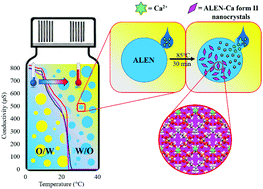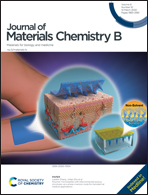Potentiating bisphosphonate-based coordination complexes to treat osteolytic metastases†
Abstract
The hydrothermal reaction between bioactive metal (Ca2+, Zn2+, and Mg2+) salts and a clinically utilized bisphosphonate, alendronate (ALEN), promotes the formation of several materials denominated as bisphosphonate-based coordination complexes (BPCCs). The systematic exploration of the effect of three variables, M2+/ALEN molar ratio, temperature, and pH, on the reaction yielded an unprecedented number of materials of enough crystal quality for structural elucidation. Five crystal structures were unveiled by single crystal X-ray diffraction (ALEN–Ca forms I and II, ALEN–Zn forms I and II, and ALEN–Mg) and their solid-state properties revealed in tandem with other techniques. The dissolution of these BPCCs was tested and contrasted to that of the commercially employed generic form of Fosamax® Alendronate Sodium, using fasted-state simulated gastric fluid and phosphate-buffered saline solution. Quantification of ALEN content was performed by derivatization with Cu2+, which produced a soluble complex suitable for quantification. The results show that these materials present a pH-dependent degradation. Moreover, a phase inversion temperature (PIT) nano-emulsion method was applied to the synthesis of ALEN–Ca form II. Size distribution analysis demonstrated the efficiency of the PIT-nano-emulsion method to decrease the particle size of this BPCC from ∼60 μm to ∼438 d nm. The cytotoxicity of ALEN, ALEN–Ca form II (bulk crystals), and nano-Ca@ALEN (nanocrystals) against the MDA-MB-231 cell line was investigated. Nano-Ca@ALEN form II presents higher cytotoxicity effects than ALEN and ALEN–Ca form II (bulk crystals), showing inhibition of cell proliferation at 7.5 μM. These results provide evidence of the structure, stability, dissolution and cytotoxicity properties of ALEN-based BPCCs and pave the way for better formulation strategies for this drug through the design of nano-sized BPCCs for the treatment of bone-related diseases.



 Please wait while we load your content...
Please wait while we load your content...